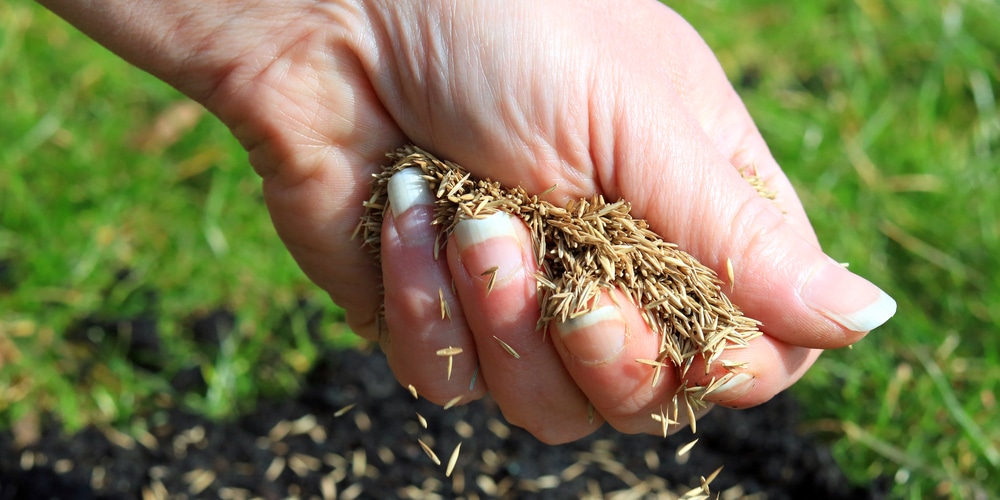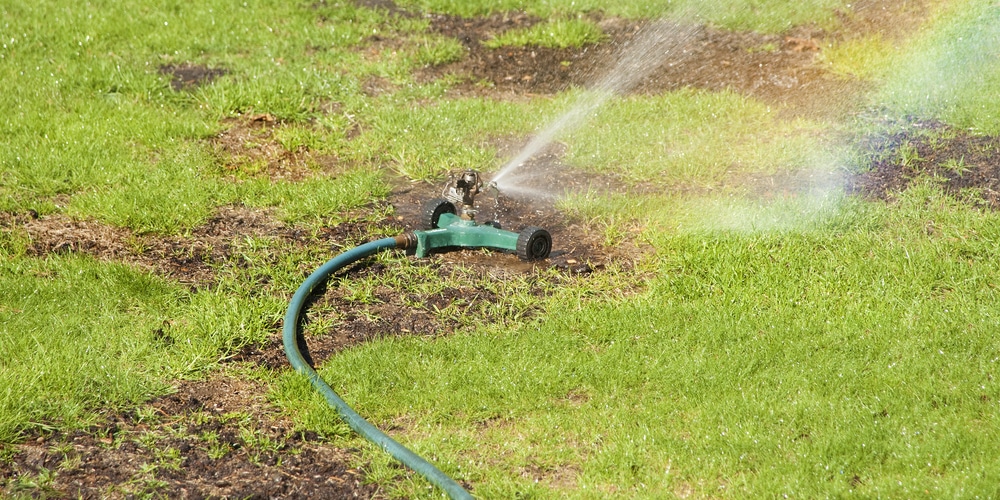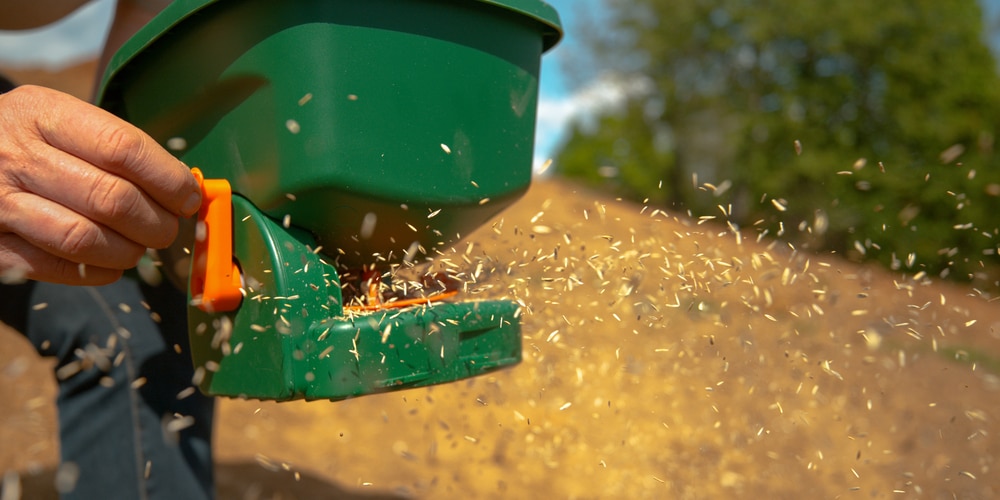Where to Start
Before you turn your aspirations of lush greenery into reality, remember that restoring the vitality of your lawn is a structured process. It involves carefully scrutinizing its current state and addressing the underlying causes hindering its growth.
Assessing Lawn Health
To kickstart the revival, examine your lawn for signs of life and decline. Look for:
- Active growth: Presence of new shoots can signal that the lawn is dormant, not dead.
- Uniformity: Patches of green amidst the brown can indicate recoverable areas.
Consider a soil test to check for nutrient deficiencies. This can be vital to determining the next steps in the revival process.
Factors Affecting Lawn Decline
Several elements could contribute to your lawn’s declining health. Pay attention to:
- Watering practices: Over or under-watering can damage the grass’s root system.
- Sunlight: Ensuring that your grass receives the right amount of sunlight is crucial for photosynthesis and overall health.
- Soil Compaction: Heavy traffic can compact soil, restricting root growth. Aeration might be necessary to improve air and water movement.
- Thatch: An excessive layer of thatch can block nutrients and water from reaching the roots, so dethatching may be required.
Preparation for Seeding
Before you embark on the quest to revive your lawn, proper groundwork is crucial. The success of your new grass depends on the condition of the soil and the seed you choose.
Soil Testing and Amendment
To ensure your soil is ready to support new growth:
- Conduct a soil test to determine pH levels and nutrient deficiencies. Your local extension office can assist you with this.
- Amend the soil based on the test results. Common amendments might include:
- Lime to raise pH if the soil is too acidic.
- Sulfur to lower pH if the soil is too alkaline.
- Organic material like compost to improve structure and nutrient content.
Selecting the Right Grass Seed
The success of seeding heavily lies in:
- Choosing a grass variety that thrives in your climate. Cool-season grasses, such as fescue and ryegrass, are suitable for northern regions, while warm-season grasses like Bermuda and Zoysia are better for southern areas.
- Match the grass type to your lawn’s conditions, such as shade tolerance or drought resistance.
Seeding Process
Starting a lawn from scratch or overseeing a thinning one involves a meticulous seeding approach. This ensures root establishment and uniform growth.
Timing and Techniques for Seeding
- Choose the Right Time: Ideally, sow grass seed in the late summer to early fall. This time-frame capitalizes on the warm soil and cooler air temperatures, which are conducive to seed germination and root development.
- Seeding Techniques:
- Prepare the Soil: Ensure it’s loose, leveled, and free of debris.
- Sow Evenly: Use a spreader for uniform distribution.
- Lightly Rake: Mix the seeds into the topsoil for optimal soil contact.
- Roll the Area: Use a roller to firmly press the seeds into the soil.
Watering and Fertilizing Best Practices
- Watering Schedule:
- Keep the top inch of soil consistently moist but not waterlogged.
- Frequency: Water lightly once or twice a day depending on weather conditions.
- Fertilizing Protocol:
- Initially, use a starter fertilizer to provide essential nutrients.
- Application: Follow the manufacturer’s instructions for the amount and frequency.
Post-Seeding Care
Once you’ve sown your grass seed, the real work begins to ensure these seeds mature into a lush lawn. Your attention during the early days and beyond is crucial for the lawn’s revival and sustained health.
Initial Lawn Maintenance
- Water Wisely: Your seeded lawn needs a consistent moisture level without becoming waterlogged. Aim to lightly water at least once a day so that the top 1 to 2 inches of soil stay moist, particularly during dry spells.
- Morning Watering: It’s best to water your lawn in the early morning to reduce evaporation and fungal growth.
- Avoid Overwatering: Too much water can wash away seeds or cause diseases. Adjust your watering schedule based on rainfall and soil moisture levels.
- Limit Traffic: Keep foot traffic to a minimum to protect delicate sprouts and avoid soil compaction.
Long-Term Lawn Health Strategies
- Scheduled Feedings: Fertilize your lawn with a high-quality product to provide essential nutrients. Follow a fertilizer schedule that’s suitable for the type of grass you have planted.
- Start with Starter Fertilizer: A starter fertilizer is ideal for new grass, as it contains a balance of nitrogen, phosphorus, and potassium that encourages root growth.
- Regular Applications: After the initial feeding, apply fertilizer every 6-8 weeks during the growing season.
- Aeration and Dethatching: As your lawn matures, it’s essential to aerate and dethatch your lawn to allow nutrients and water to reach the roots effectively.
- Aerate Annually: Use a core aerator to remove small plugs of soil, reducing compaction and promoting root growth.
- Dethatch as Needed: Excessive thatch can block water and nutrients. Remove it when it exceeds ½ inch in thickness.
- Mowing Guidelines:
- Wait for Growth: Mow when your new grass reaches 3-4 inches in height.
- Sharp Blades: Always use sharp mower blades to ensure clean cuts and prevent damage to the grass.
- Cut Height: Avoid cutting more than one-third of the grass blade length at a time to reduce stress on the lawn.
Troubleshooting Common Issues
When reviving a dead lawn with grass seed, you may run into a few roadblocks. The key to a lush, green revival lies in identifying and addressing these common problems:
- Bare Patches: These may be caused by heavy foot traffic or pet spots.
- Aerate compacted soil to improve nutrient access.
- Use a quality grass seed appropriate for your lawn’s conditions.
- Poor Germination:
- Ensure you have good seed-to-soil contact; lightly rake the seeds into topsoil.
- Maintain consistent moisture but avoid overwatering which can wash seeds away.
- Weeds: Unwanted plants can outcompete your grass seed.
- Remove all weeds before seeding, either manually or with a non-selective herbicide.
- Apply a pre-emergent after seeding to prevent new weeds without harming your grass.
- Disease or Pest Damage:
- Identify the specific pest or disease affecting your lawn.
- Treat with the appropriate fungicide or insecticide recommended for your lawn type.
- Watering Issues: Overwatering or underwatering can hinder grass revival.
- Create a watering schedule to keep the soil consistently moist but not soaked.
- Incompatible Grass Types:
- Select a seed variety that matches your climate, soil type, and sunlight availability.
- Consult a local nursery or extension office for recommendations suitable to your region.
Frequently Asked Questions
In this guide, you’ll find practical steps to get your lawn from dreary to dreamy, ensuring each action you take brings you closer to a lush green landscape.
How can I quickly revive dead grass on my lawn?
- Start by raking up the dead grass to remove thatch and improve soil contact for seeds.
- Apply a quick-release nitrogen fertilizer to provide an immediate nutrient boost.
Is it necessary to water a lawn with dead grass to facilitate its recovery?
Absolutely. Regular watering helps to:
- Keep the soil moist for new seeds.
- Facilitate nutrient absorption necessary for grass revival.
What steps are required to repair a lawn damaged by fertilizer?
Steps to mitigate fertilizer damage include:
- Leach the soil with water to flush out excess fertilizer.
- After a few days, reseed the affected areas to encourage new growth.
Is it possible to rejuvenate dead grass during the summer months, and if so, how?
Yes, you can rejuvenate dead grass in summer by:
- Watering your lawn early in the morning to reduce evaporation.
- Mowing higher to protect the soil from the harsh sun.
How can a lawn be revived if it is overwhelmed with weeds?
To revive a weed-choked lawn, your action plan should include:
-
- The use of selective herbicides to target the weeds without harming your grass.
- Regular mowing to prevent weeds from flowering and spreading seeds.
What preparation is needed for reseeding a lawn with dead grass patches?
Before reseeding:
-
- Test the soil to ensure it has the right pH and nutrient levels.
- Aerate the soil to improve oxygen and water flow to the grass roots.
Last update on 2025-04-19 / Affiliate links / Images from Amazon Product Advertising API





